I am working on an art project involving panoramic video, shot in New Orleans. The project is a commission for video artist Pawel Wojtasik from the Massachusetts Museum of Contemporary Art (Mass MoCA). It will form part of a show called “These Days: Elegies for Modern Times”, opening on April 4th.
Since I have previous experience using the Point Grey Research Ladybug 2 camera, I’m helping support the shoot in a number of ways. This article will focus mostly on the logistics of using the Ladybug 360 video camera on location. If you just want to look at the pictures, they are here. (Thanks to Denise Markonish for the use of the pictures!)
The Ladybug camera has 6 sensing elements – 5 around, and one on top – which give pretty complete full dome coverage. However, the camera generates a lot of data, very quickly, and needs to be connected to a computer for capture. It also requires external power. We found that an Apple MacBook Pro (running Windows) worked exceptionally well for capture. Since we already need to carry a battery pack, adding an external eSATA hard drive gave us a very speedy way to store all the incoming data. With this configuration, we are able to capture full resolution video from the Ladybug at 30 fps – in a mobile configuration, which is great!
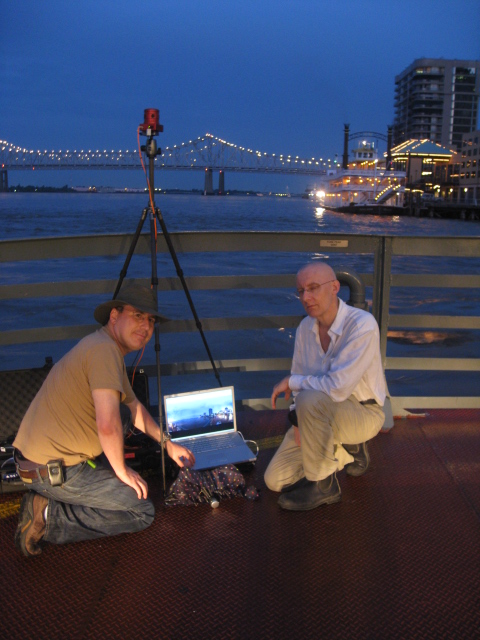
Ladybug mobile rig
Everything packs into two Pelican waterproof cases, lined with foam which helps with shock absorption. I would like for everything to be functional without having to move it from the case, but the hard disk and the AC inverter require ventilation. At least they can be set on top of the foam, which absorbs vibration.

Ladybug mounted on minivan
Mounting the camera on various vehicles posed some challenges. The first was mounting on vehicles, since a lot of modern cars don’t have a lot of obvious flanges to hook into. We used hook anchors from a Cinekinetic CineSaddle, as well as the rope that came with it. I placed a Gitzo tripod with legs in the widest position on the roof the vehicle, passed the rope through the anchors, and wrapped it around the tripod pole from every direction. Finally, after securing the ropes, I extended the legs of the tripod to firmly tense it against the ropes. With some variations, this is what we did for all further shots from cars or vans.
Next challenge was mounting the Ladybug on a boat. For this, we had a counterweight mount from Horizon True, a device that attempts to keep a camera level. However, it wasn’t just the levelling capabilities that were important: the Horizon True mount comes with clamps that allow mounting a camera on to any kind of vertical or horizontal pole, and this came in extremely handy. For the first boat trip, the mount was attached to an aluminum mop handle, clamped to the boat’s windshield rail using fence clamps.
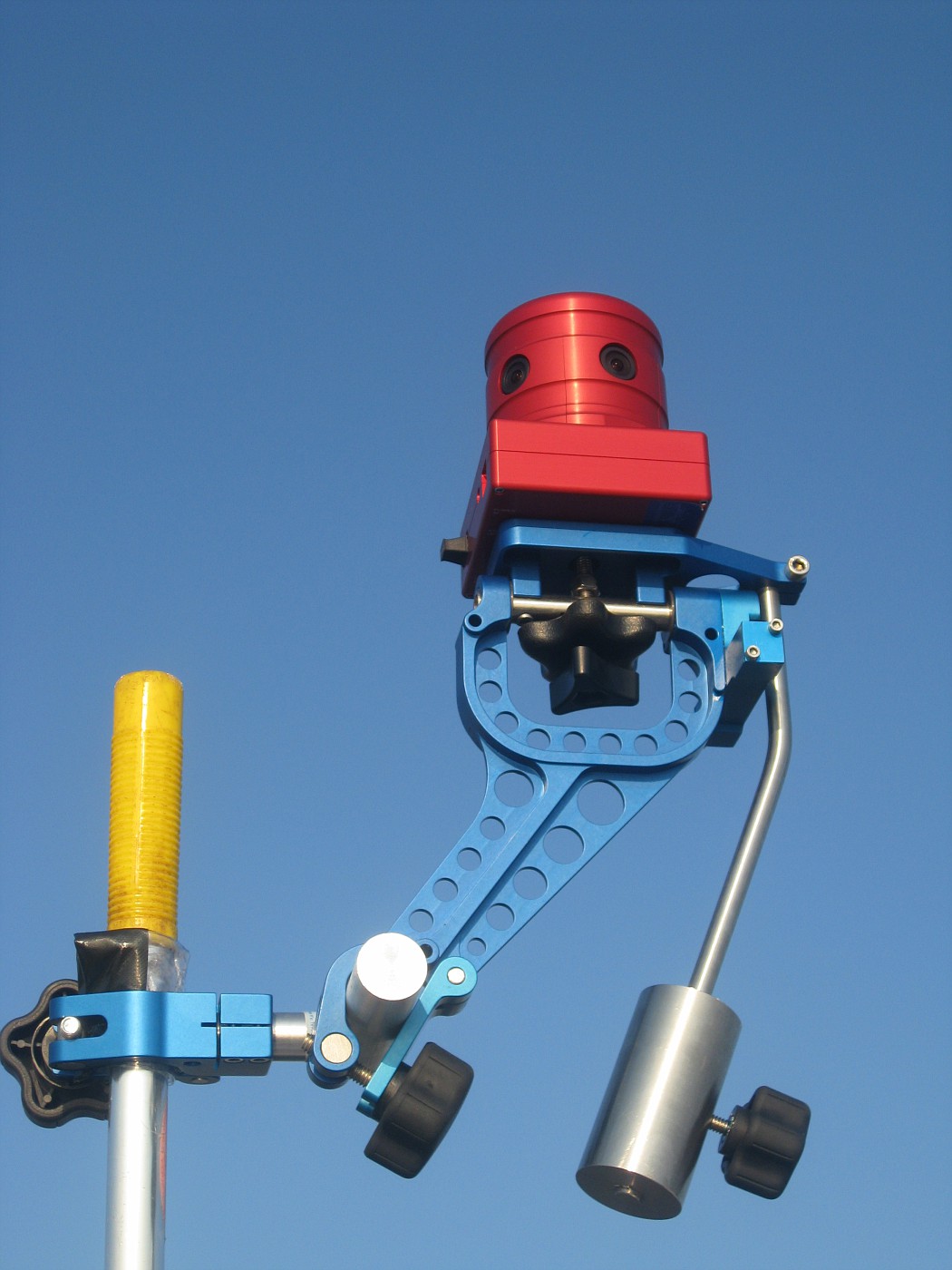
This mounting system worked relatively well, though I suspect it is probably best when used on a sailboat. It tended to pick up motion very quickly when the boat was not in motion, and rolling a lot. I think it may be possible to attenuate this by adjusting the position of the counterweight, and maybe the hydraulic damping.
The next big challenge was mounting on an airboat, a shallow-draft boat with a big propeller on the back, widely used for swamps and marshes since it can cruise over vegetation (and even on land, for short distances). I thought the airboat would be a challenge, due to the speed and vibration, so I wanted a very solid mount.
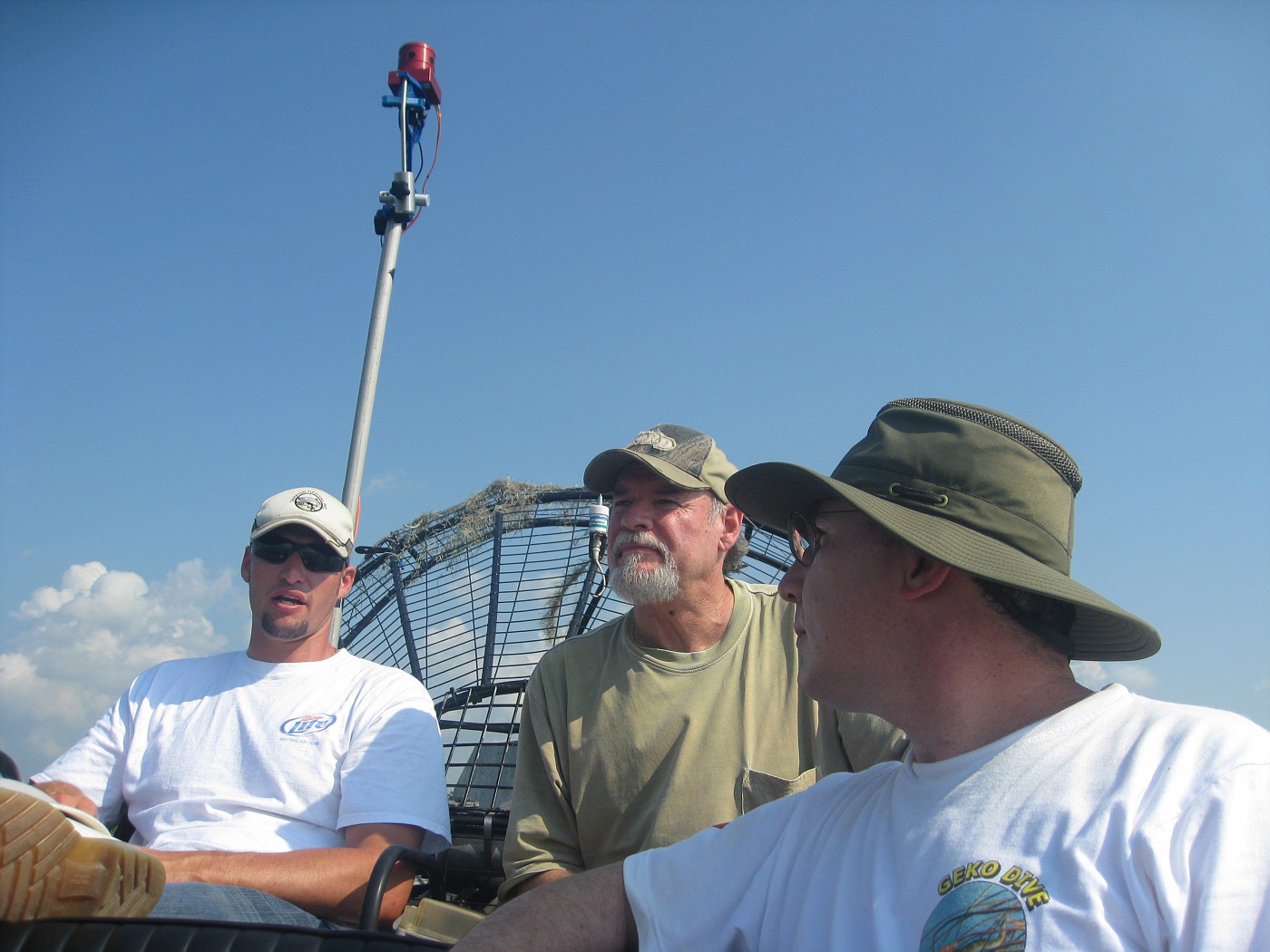
Fortunately, the owner of the airboat procured a sturdy pipe for us to use as a mast, which I attached to the propeller cage using the same fence clamps as before. The Horizon True mount worked well here too, though it became somewhat unstable when buffeted by the wind.
Mounting on a Mississippi river crewboat was straightforward: the tripod was set up on the roof of the boat’s cabin, and secured using a tie-down strap from the CineSaddle.
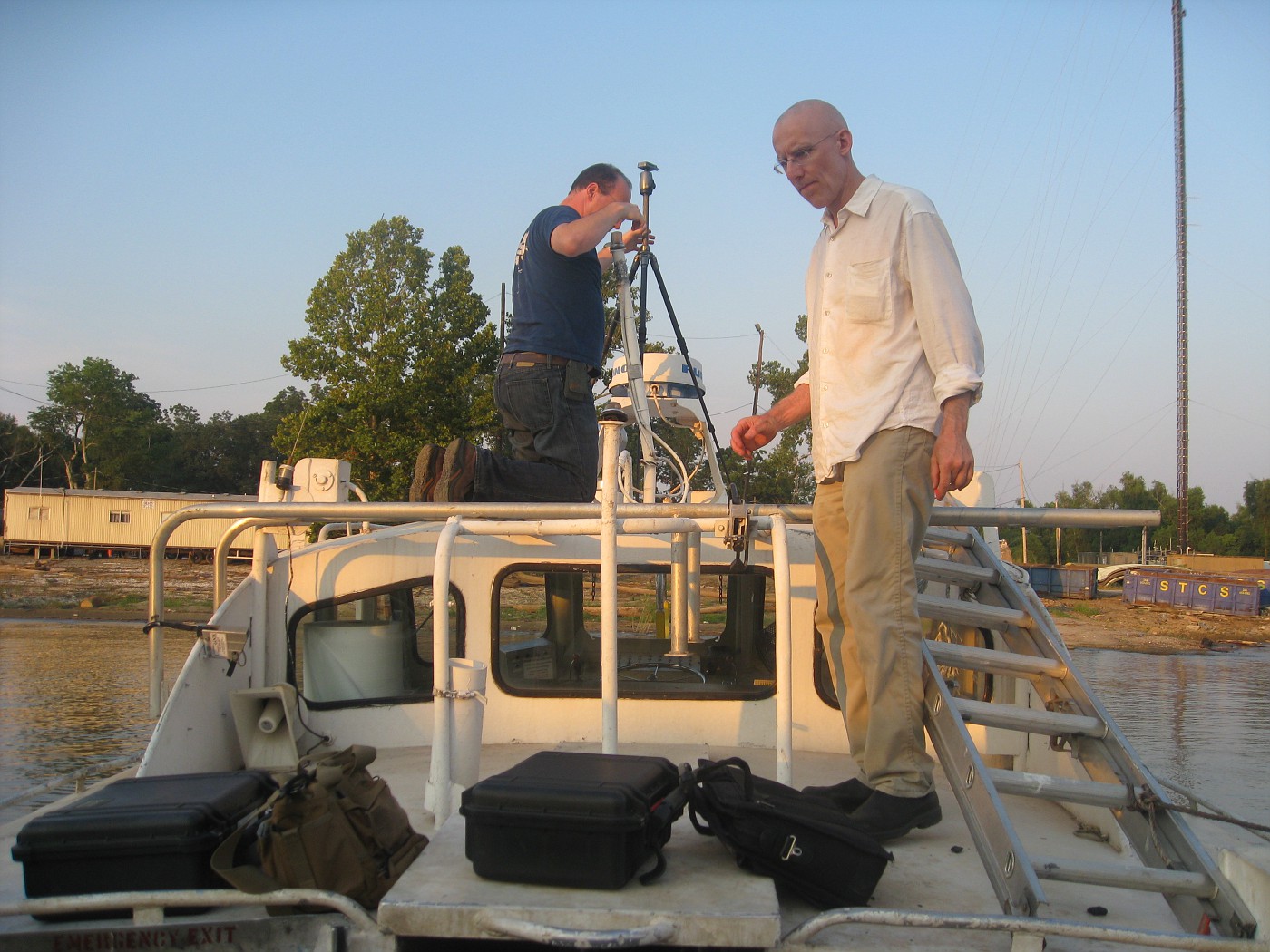
The results so far have been pretty good:
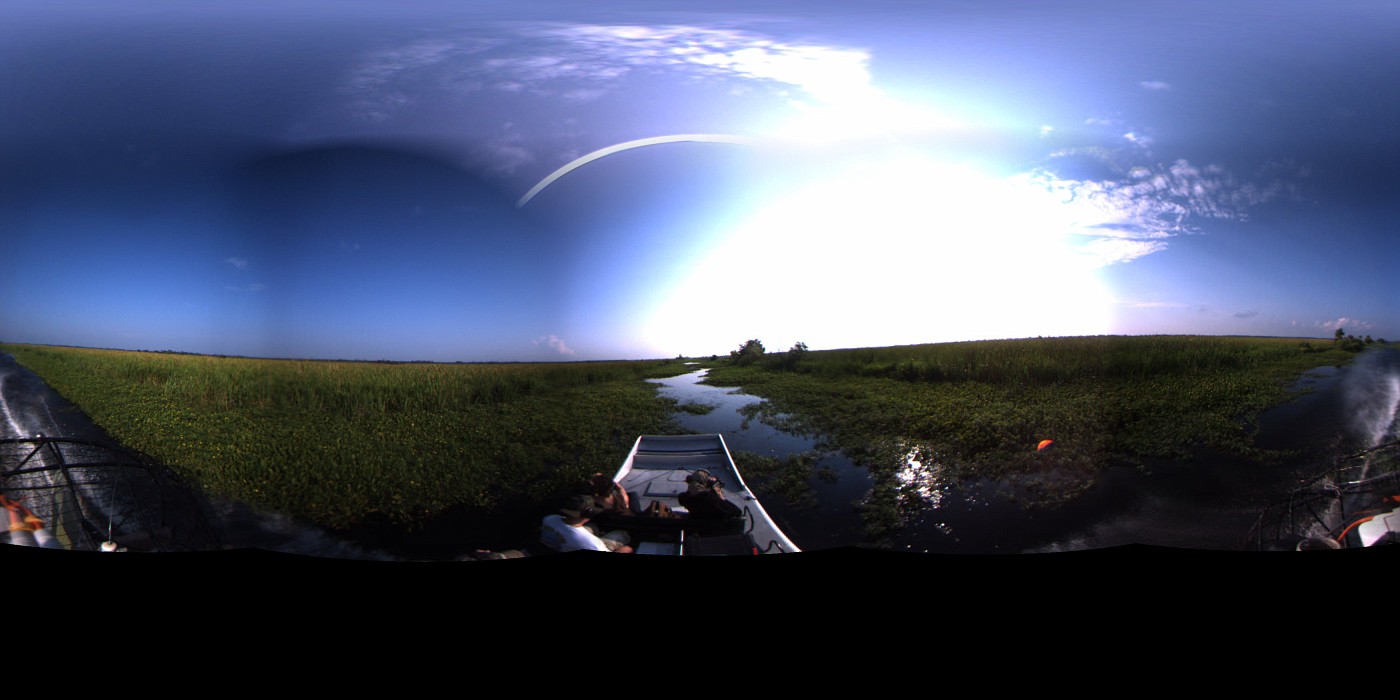
Start viewing from here to see some sample frames, rendered both as a dome projection and as a 360 degree panorama. Note that falloff and vignette correction has not been applied yet.
Considering that the Ladybug is meant to be a laboratory tool, and not suited for heavy outdoor use, it has performed well. I was concerned for the G-Tech external drive and the MacBook laptop, but both have held up. (I did make sure to run extensive diagnostics on the drive after shooting, and backed up a lot of the footage!)
A simple kit of parts including hooks for cars, rope, tie-down straps and clamps let us handle practically all of the mounting situations we encountered. Being able to tie good knots is essential.
I’ll be posting further as the project moves further, including some examples of the video.

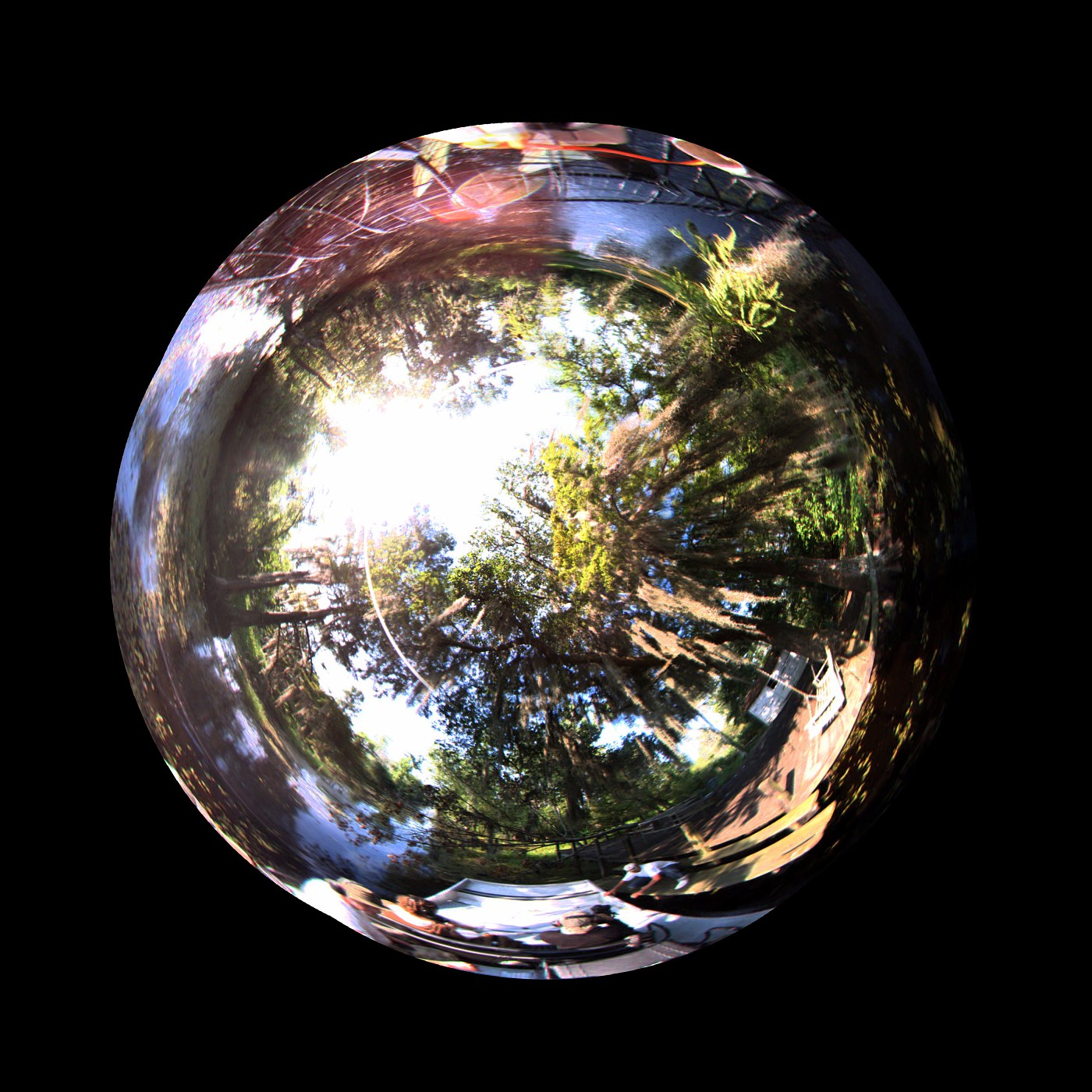
Wow, great blogpost, very interesting! Those look like iSight cameras in the ladybug, are they? – Bre
[…] NYCResistor’s Gian Pablo Villamil is working on a really interesting project with panoramic Video in New Orleans. He can’t tell us what the project will do, who is involved, or if space aliens really exist, but the few photos he has on his site look pretty amazing and he has written about some solutions to technical hurdles associated with the piece. Stay tuned for more on the project! As per Gian’s request, this blog will self destruct in 5, 4, 3, 2… […]
Hello, I found this post via Bre’s NYCresistor post. Your project looks very interesting! I’m in New Orleans. If you’re still down here, I’d love to meet and talk shop. And if you’re willing, maybe I could get together a small group of video artists and you could “present” your project to us. I know my friends would be interested too. Please send me an email if you’re interested:
my email address didn’t show up at the end of my last comment for some reason, here it is again:
simon at yamlike dot com
[…] Gian Pablo Villamil, a recent graduate of NYU’s ITP Program was with us serving as panoramic guru and tech assistant on the project. Check out his blog with images and details about technical side of filming a panoramic video using the Ladybug 2 camera. Pawel and Gian Pablo head back to New Orleans this week where they will finish up filming (they are planning a trip to an abandoned Six Flags Amusement Park, a canoe trip through a forest of dead trees and many other adventures), and after that the editing process will begin. Come to MASS MoCA in April to see the finished results! […]
[…] also written about using the panoramic video camera here: https://villamil.org/?p=124 Monday, April 6th, 2009 mly2 | Exhibitions, Alumni News, […]
[…] I’ve written more about “Below Sea Level” on my website here, and also a couple of “making of” articles about the projection system and the panoramic video camera. […]
[…] Times” at Mass MoCA. You may already have read my post on capturing panoramic video footage, “Shooting immersive video in the field”. After a long, sometimes arduous, but always exciting voyage, the project is almost ready to show. […]